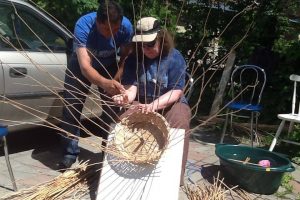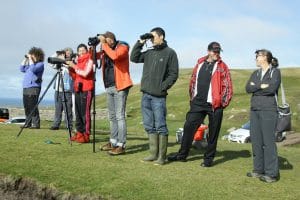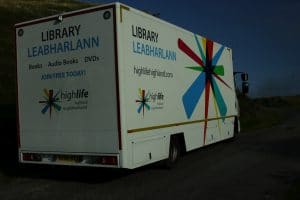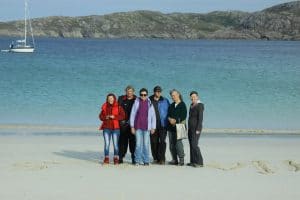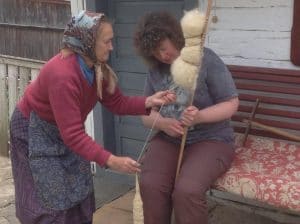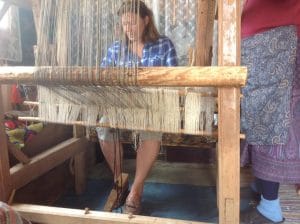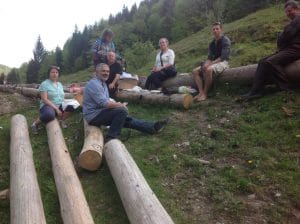Remote rural communities in the West are faced with an ever increasing cost of living due to their dependence on goods and services that are produced elsewhere and have to be transported long distances. This is a trend that is likely to continue and there is a desire in some areas to consider how communities can if possible become more resilient and self sustaining.
Within this context in Scotland, particularly in the remote North and West Highlands, an emphasis on communitising assets has evolved as an important strategy in developing resilient communities. While some community owned estates are crofted (traditional tenant-based agriculture system), much of the land now owned and managed by communities does not have tenants who are working the land. Experiences of the groups are mixed and while the majority have been able to achieve benefits through employment creation, the provision of new house sites, opportunities for business creation and enabling greater access and recreation opportunities there is little evidence of individuals or groups of individuals within the communities (other than Directors) either engaging with the management of the land or accruing benefits from it. Some groups aspire to have greater engagement but have so far been unable to achieve this.
Counter to this is the experience in parts of Romania, specifically in the Apuseni Mountains, where resources are much more equitably shared and managed by individuals, the community and the state resulting in a relatively small carbon footprint with extensive use of both locally grown (agriculture and forestry based) and value added products. Wood is the main source of fuel and every village has a sawmill which serves local needs. Young people are encouraged and supported to remain in the area and newly married couples are gifted enough green timber to build a new house. There is evidence of a lifestyle which incorporates low food miles, local value adding, low carbon energy use, low waste production and high local reuse and recycling, strong and active cultural links to the land, and bio diverse landscapes actively managed in a low key way.
The Romania of today is in some ways similar to the Scotland of 40-50 years ago but more importantly has retained skills, culture and systems which mean it is better placed to respond to future challenges around sustainability and climate change. Communities in Scotland aspire to regain a more self-sustaining lifestyle, less dependent on, and less subject to, the vagaries of external influences. Communities in Romania are however on the cusp of significant changes with recent membership of the EU providing opportunities for support and also greater mobility and income earning opportunities than previously. There is also exposure to a wider range of cultural influences through new technologies and more visitors to the region which has seen an exodus of young people from the countryside. There is a danger that Romanian communities may suffer the fate of many Scottish communities without realising what they have lost.
Coigach – Assynt Living Landscape (CALL):
- CALL is one of the largest landscape restoration projects in Europe: 60,600 ha
- CALL is a partnership which aims to benefit the land, the people and the local economy in thenorthwest of Scotland.
- Working with landowners and local people, CALL aims to restore the health of the whole ecosystem by improving and re-connecting habitats (especially native woodlands) and creating rural employment and volunteering opportunities.CALL’s Programme Plan sets out the reasoning behind setting up this partnership, its vision, and the projects which will be undertaken to achieve its aims: www.coigach-assynt.orgCALL has a 40-year vision:
‘It is 2050; the communities of Coigach and Assynt are working together to achieve a truly living landscape through improved understanding of their environment and the impacts of climate change; shared active management providing a diverse range of connected and resilient habitats; creation of local employment and training opportunities, and; building on the communities’ strong cultural heritage linked to the land.’
Knoydart Forest Trust:
Knoydart Forest Trust (KFT) is a community company; it manages community woodland on behalf of Knoydart Foundation (a community landowner), as well as neighbouring privately owned woodland. The trust’s objectives are to manage the woodland to increase benefits to the environment, community and wider public.KFT is a company limited by guarantee with charitable status and run by a board of directors who are volunteers, elected by the members. Today, there are around 60 members and four employees. Volunteers provide valuable support to KFT’s work throughout the year.
KFT manages 800 hectares of community woodland made up of both semi-natural native woodland and conifer plantations. Restructuring of the conifer plantation behind the village of Inverie will increase the variety of trees to make the woodland more stable and useful to future generations. As part of KFT’s long term vision of linking up the woodland habitat on the peninsula, over 200 hectares of new native woodland has been created on community land, and new woodland has also been created by the Trust on behalf of neighbouring landowners.To make best use of the woodland and to generate income to re-invest in the woods, milled timber and firewood is produced and sold locally. Recently, we have also developed a range of small wood products through the trading subsidiary Wood Knoydart. To encourage people to explore the woods we have built and maintain a network of paths and tracks, and we provide guided walks in the summer.Community Woodland Association:
The Community Woodlands Association (CWA) is a not for profit company limited by guarantee. It was established in 2003 following the 2002 Community Woodland Conference at Betty Hill and a nationwide consultation of community woodland groups. It acts as the direct representative body of Scotland’s community woodland groups. The aims of the organisation are to help community woodland groups across the country achieve their aspirations and potential, providing advice, assistance and information, facilitating networking and training, and representing and promoting community woodlands to the wider worldA ‘community woodland’ may be defined as a woodland partly or completely controlled by the local community, through a community woodland group. The woodland may be owned or leased by the group, or managed in partnership with another organisation. There are over 200 community woodland groups across Scotland, involved in or responsible for the management of over 22000ha of woodland and open space. New groups continue to form, encouraged by the Land Reform Act and the National Forest Land Scheme.Community woodlands are extremely diverse, embracing all woodland types from ancient semi-natural woods to extensive conifer plantations, and ranging from less than a hectare to over a thousand hectares in size. They can be found anywhere from small patches of newly-planted trees in town centres or city housing estates, to more extensive older woodlands in remote countryside and vary in level of community involvement, and encompass a multitude of uses and produce a multitude of benefits.
An exchange was proposed:
To increase wider community participation in active land management and product utilisation through the Coigach – Assynt Living Landscape partnership, and to extend this to Knoydart, Sleat & Raasay.
and…
To raise awareness of alternative approaches and models of community engagement and participation in land management and to encourage implementation of these.






